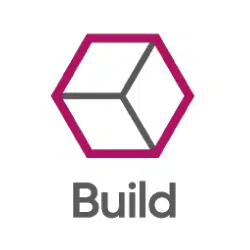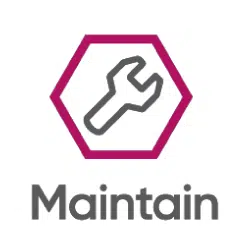STARTING A DENTAL PRACTICE – EVERYTHING YOU NEED TO KNOW
Squat Practice Set Up
TOP TIPS
10 Top Tips to Start & Run a Successful Squat Dental Practice Whitepaper
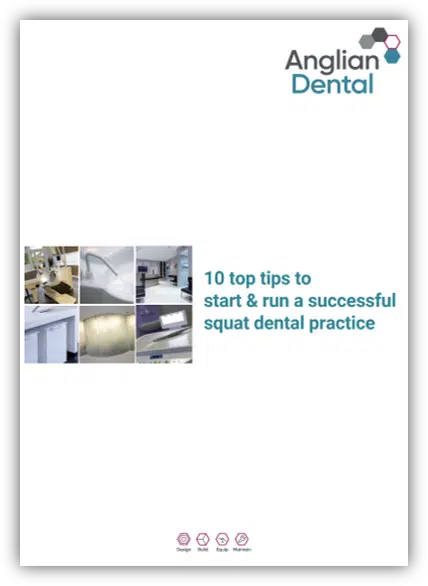
COSTS
The 4 Main Influencers of the Cost of a Squat Practice Project Whitepaper
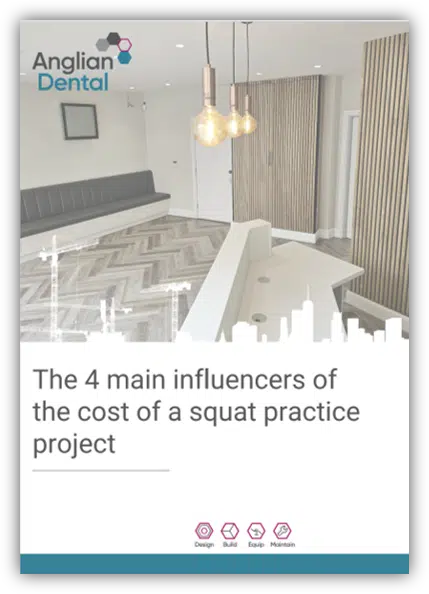
LOCATION
Location, Location, Location Whitepaper

DESIGN
Dental Surgery Layout Design Whitepaper
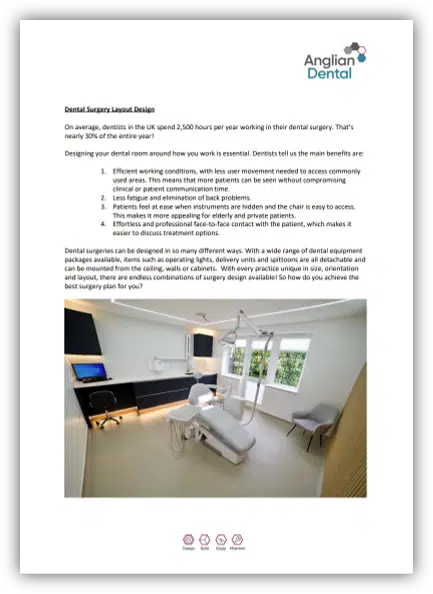
For many dentists, remaining an associate all your life is simply not enough. Maybe you need to increase your earnings, have more work-life fulfilment, gain the freedom to choose your target client base or create a dental practice that reflects your own enthusiasm and identity. Although not easy, the appeal of starting and running a squat practice is an exciting aspiration for many dental associates today. Here we explain what is involved and share some top tips for setting up your own practice, as learnt over our 20 years of dental surgery design and support.

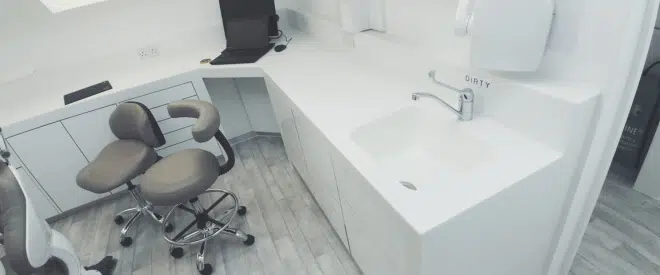
What Do We Mean By ‘Squat Practice’?
Squat Practices are newly created, dentist surgeries in their startup phase – usually started by a dentist who has left an established private or NHS practice to set up their own surgery from scratch. For entrepreneurial dentists, the long-term value in breaking free and forming their own practice is worth the extra work and risk involved in the setting up and establishment. By starting a squat practice, an aspiring dentist can create their ideal surgery based on the needs of their target patient market and their own unique culture.
What Is An Alternative To Setting Up A Squat Dental Practice?
Of course, dentists looking to become a proprietor of their own dental surgery could try to find an established one for sale. This could have the advantages of an established patient base, a proven track record, experienced support staff and the necessary compliance and maintenance systems in place. Equipment upgrades, new layout and décor and other surgery refurbishments could be made over time.
The disadvantages might be that the surgery has a negative reputation, its location might not be the best, the business ‘goodwill’ would need to be paid for and its established culture could well be different from what you are looking for. Furthermore, you could be taking on existing contracts, running costs and procedures that you wouldn’t choose to. Refurbishment work would also have to work around existing opening times and ongoing business running costs.
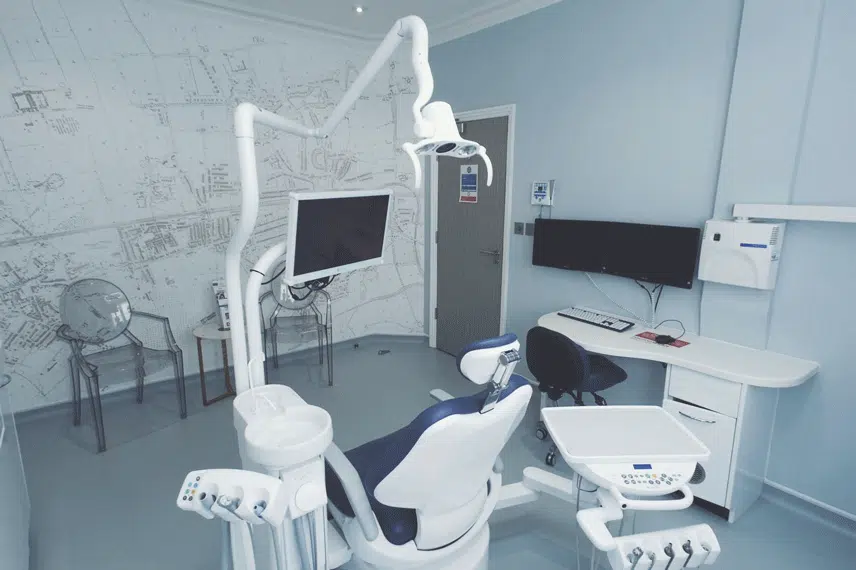
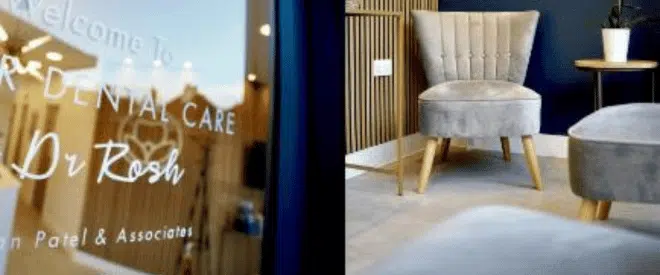
Advantages Of Starting Your Own Surgery From Scratch
- Potential to lift your earnings over time.
- You get to choose your premises location. This could be nearer home, in an under-served area or within the catchment of your ideal clients.
- Your design and fit-out reflect your own professional identity and chosen aesthetics.
- Your choice of new or refurbished equipment that fits your needs.
- You get to form your ideal team as needed; dental assistants, care professionals and reception support staff who reflect your culture of care and professionalism.
- Escaping a treadmill controlled by others, you set your working hours/opening times and mix of private/NHS work.
Are You Ready To Branch Out On Your Own?
Maybe you have been working as an associate for a while and have ideas how a surgery could be better designed and run, maybe you would like to take better care of patients but are held back by your current surgery management or NHS limitations.
You have energy for branching out on your own, or maybe you’ve even lost your once-high enthusiasm and want to reignite it by following your professional dream to new horizons? You have a good financial footing and some insight into managing the business side of a dental surgery.
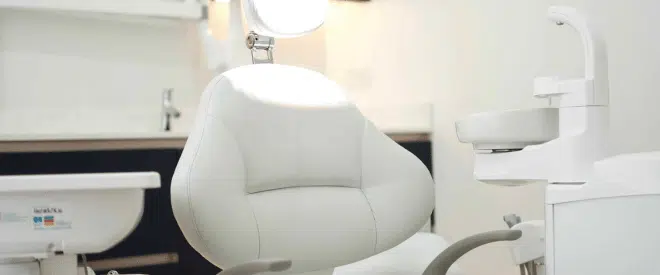
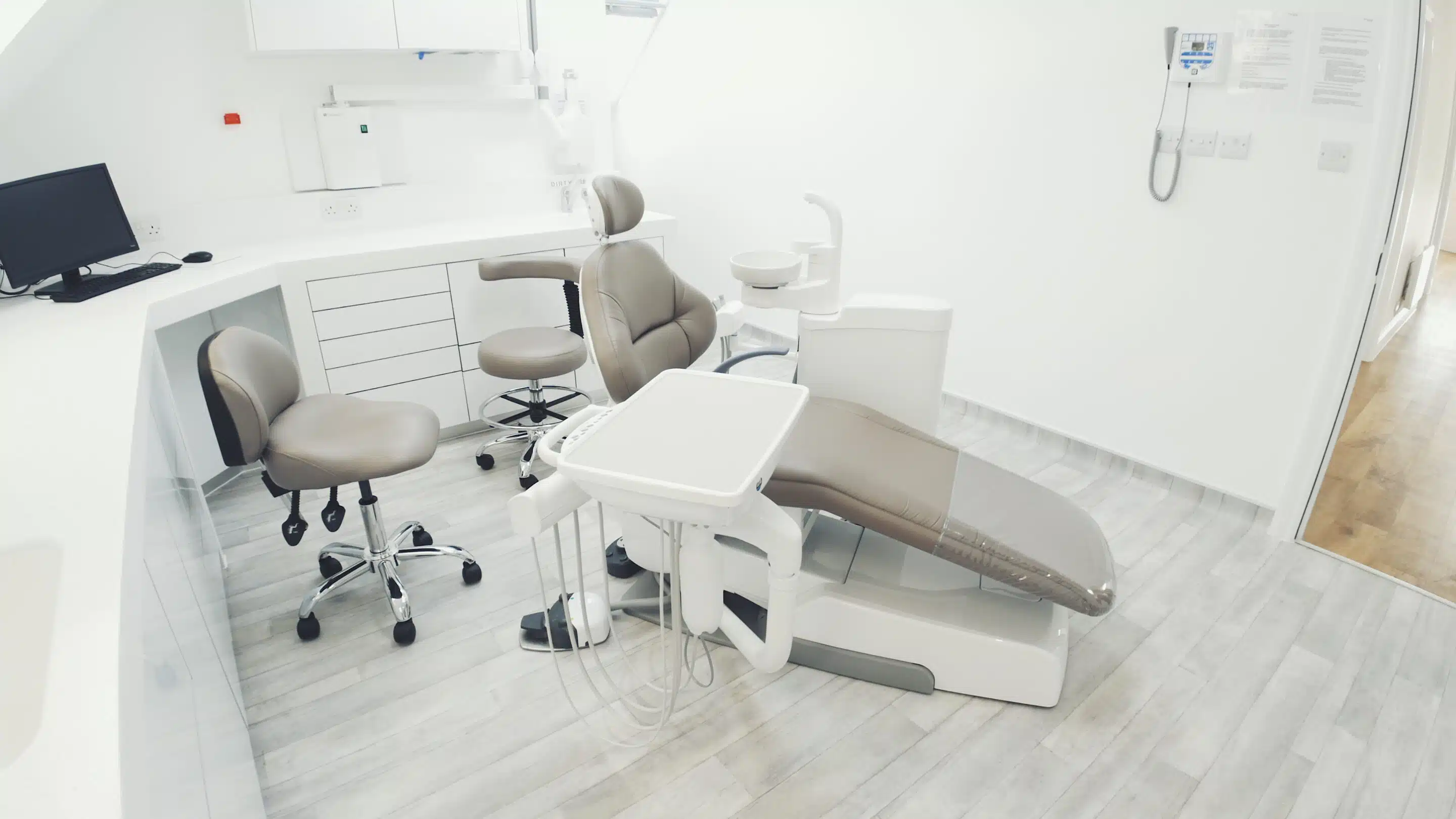
How Much Does It Cost To Open A Dental Practice?
The cost of setting up a squat dental practice takes some time and thought to work out as there are many decisions to be made, with different routes suiting different circumstances. The two main cost categories are Capital Expenditure and Operating Expenses (OpEx). Purchases of long-term assets such as a dental air compressor or chair are capital expenditures, whereas wages, lease payments and other ongoing running costs are OpEx. Spending too much upfront on capital expenditure can run you into cash-flow difficulty as much as high OpEx commitments such as property rental. It’s a good idea to keep a cushion of available funds accessible to service your running costs through a quiet patch. Contact the Anglian’s Surgery Design Consultant for advice on surgery set-up guidance, practice design, surgery fit-out budgeting and equipment cost optimisations. Watch the webinar “Setting Up A Squat Practice” with dental consultants Dev Patel, Murray Welch, Samantha Shayler and Saba Arif and continue reading our full guide below.
New Squat Practice Set Up: The Top 5 Challenges
In our experience, these are the most significant issues new dental surgeries face:
- It usually takes two to three years to grow your business to the point where you can make a profit.
- Often costs are high and profits low, with profits falling somewhere between £40,000 and £60,000 initially all being well.
- Small practices struggle to afford staff, meaning the owner must undertake many of the tasks which would otherwise be dealt with by a manager or administrator.
- Owning a practice can be lonely in a professional sense.
- The practice relies heavily on the owner. If the owner falls ill or wants to take a holiday, the income stops immediately.
However, despite the challenges, it is possible for squat practices to succeed. Through our experience with many squat practices over the last 20 years, we have compiled ten key aspects of the start-up process that can help to set you up for success.
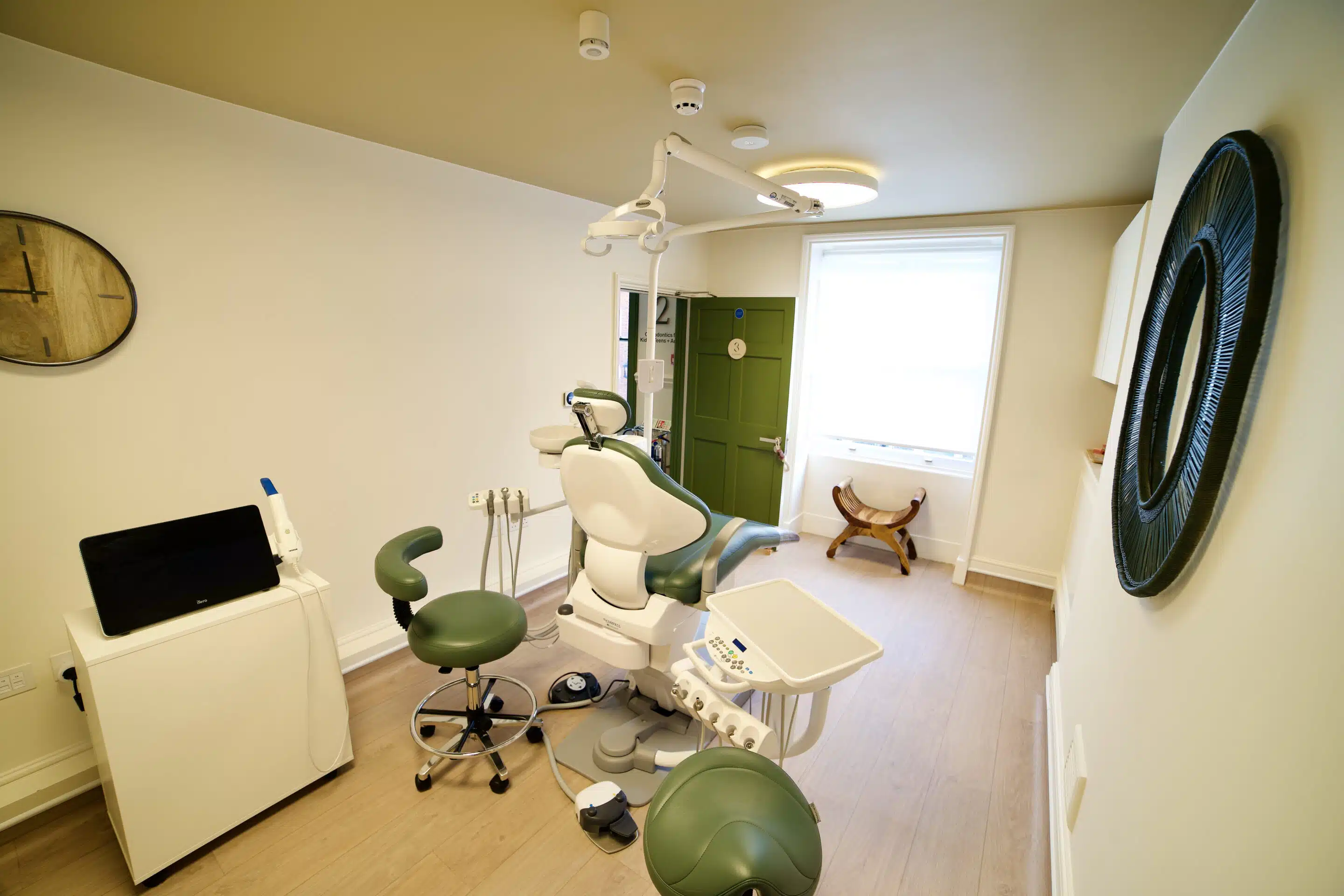
10 Top Tips For Squat Practice Setup

TOP TIP #1 – HAVE A CLEAR GOAL AND A WELL-THOUGHT-OUT BUSINESS PLAN
Set an inspiring, yet challenging professional goal. Write it down, read it every day and share it with others around you, including your staff, your suppliers and your patients. Research shows you are several times more likely to achieve a goal when you document it and share it with others. Although this may sound cliché, you will find it not only makes you more accountable but also has an inspirational effect on others too. One squat practice we worked with set a business goal to attract 500 new patients within the first 12 months of starting up!
A business plan doesn’t need to be a complex document but it should include:
- Your main goal(s) as outlined above. Keep them simple, specific and measurable. For example, “we will expand our practice from one surgery to three within xx years from now.”
- How you will finance your cost of setting up a dental practice (Capital Expenditure). This depends on your mix of outright purchase/lease and shareholder investment/loans.
- A comprehensive cash flow forecast for the first 12 months. This will give you credibility with lenders and peace of mind. Your accountant can help you produce this.
- Maintain an income for as long as possible. Keeping a current associate position will significantly help to cushion the outgoings until the practice is established enough to operate full-time.
- A marketing plan. Without marketing, you won’t attract new patients and your practice will struggle to grow.
- A clear, unique value proposition. Aim to be different, not necessarily better. Why should patients choose your practice over another? For example, walk-in hygiene, evening appointments, disabled access or a focus on a particular type of dentistry, such as paediatric or family.
TOP TIP #2 TAKE YOUR FINANCES SERIOUSLY
Seek the services of an accountant who fully understands how a dental practice works. Partner with them and build a strong relationship, one that will last for years to come!
When the time comes to purchase dental equipment and complete the practice fit out, take advantage of finance packages to ease cash flow. Most dental finance is arranged via brokers. Brokers possess the unique advantage of being able to split or spread large applications amongst several lenders. You will find the best brokers through recommendations with equipment suppliers usually recommending the best service. The ability to put the whole application together in a professional manner, and then manage the project to its conclusion is the mark of a good broker. The speed and efficiency of any broker or bank is directly proportionate to the quality of the information provided to them. A simple checklist will help in preparing an application.
Finance Application checklist:
1. Be aware of the cost of equipment and your preferred installation dates when you apply
2. List names of partners, dates of birth, home addresses and passport or driving licence IDs.
3. For limited companies, provide all directors’ names and their home addresses.
4. If you have been living at your current home residence for less than three years, a previous home address will be required.
5. A copy of a recent utility bill will help to confirm applicants’ or directors’ house residency.
6. Make a clear list of all suppliers with builders’ estimates and quotes included.
7. Deals over £100,000 may require a business plan and cash flow forecast
8. Proof of recent income and full business/practice accounts are very important.
9. A personal asset and liability statement may be needed for larger projects.
10. Be aware of personal tax positions and seek advice from a broker and an accountant.
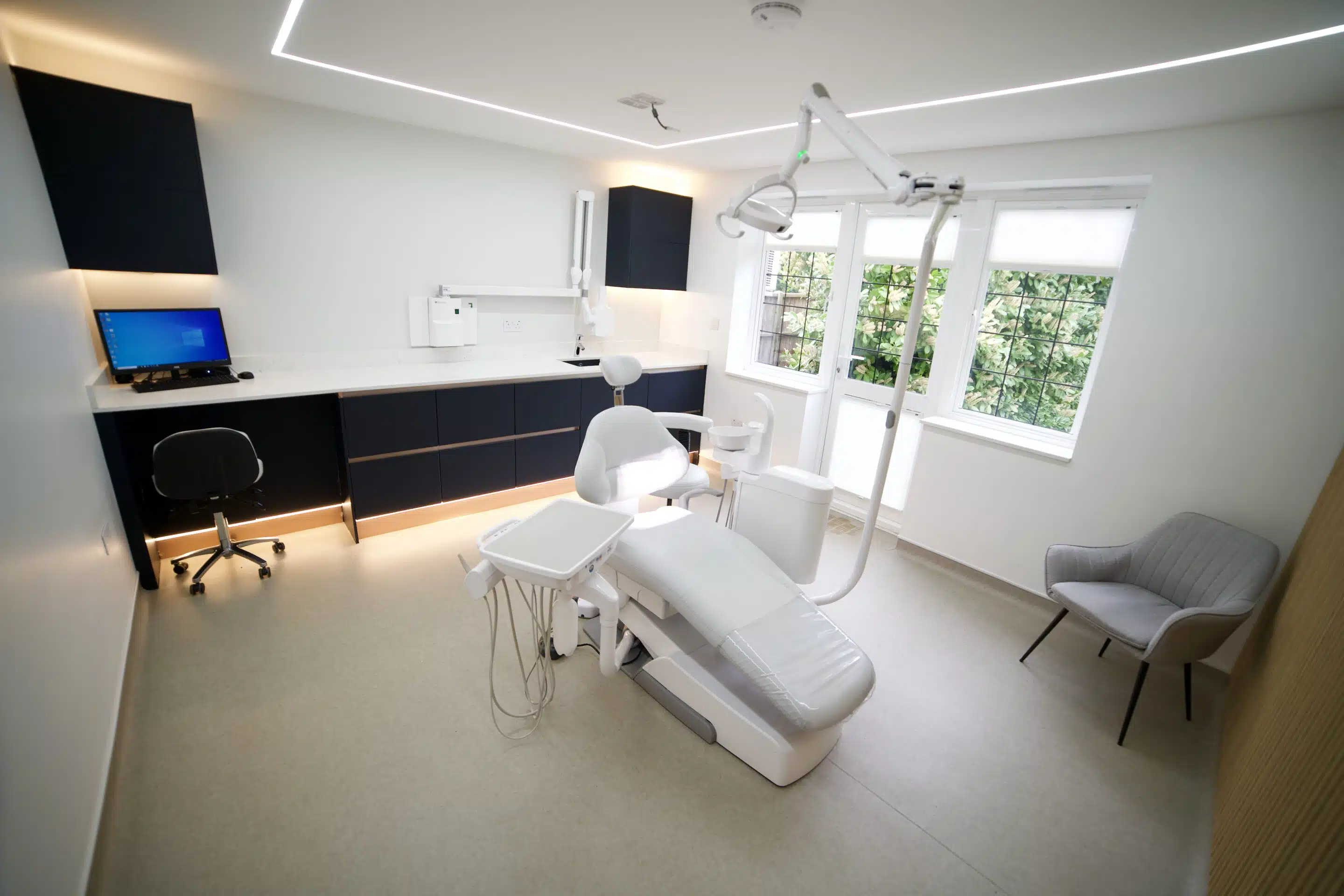
Ideally, practices should plan for all their buying requirements within a 12-month period. Some capital equipment purchases may fall within the current tax year, and there are also elements of building work that may qualify for some annual investment relief. Allowance claims are normally made prior to the 5th April, so a brief call to the practice accountant can help make savings on current and future tax allowances. There are number of specialist dental accountants, one of which is Dentax. This is vitally important, especially as annual investment allowances are now subject to transitional rules. If low net profit levels are anticipated in the current tax year, opting to lease equipment may prove more beneficial, with fixed leasing rentals in place that are guaranteed to offset a large chunk of future practice profits. This is important, as there is no point making a one-off tax claim within any one year, unless there is a sound reason for it.
In most cases it’s always best to lease practice equipment and specialist cabinetry and take out a loan for pure building works. Try to avoid doing this the wrong way around! Be aware that it’s usually easier to obtain finance for medical equipment than to borrow money on a loan.
Whilst there are some elements of building work that can be classified as capital equipment, the main cost of building projects consists of materials and labour. A mixture of loans and cash is best suited to fund this work. It is important to remember most banks that already hold security over buildings or other assets may not top up existing loans without an up-to-date valuation of the premises being carried out. This will take time and may incur extra charges. New secured loans will carry various set-up costs, including a valuation fee and expensive legal charges. Banks also charge arrangement fees of up to 2% of the amount you borrow. You should consider these costs and factors when deciding how to plan and pay for various finance and loan options.
An experienced broker may be able to arrange an unsecured loan for amounts up to as much as £150,000, achieving this by using more than one lender. These loans are usually approved within two to three days. Rates and terms may vary, but typical fixed flat rates will be around 2-4% above Bank of England base rate. Although five-year terms are more likely to be accepted, terms up to seven years are available for some projects. Arrangement fees for these loans average £150 per contract, which is a big saving over most other bank loan fees. Short term loans are ideal for funding internal refurbishment work, mini-extensions, relocation costs, marketing projects and smaller building and decorating projects.
All banks and finance companies will want to see a clear and recent history of business trading. Up-to-date profit and loss figures (P&L Accounts) are needed for sole traders and partnerships and audited accounts are needed for limited companies. Management accounts are useful but will not carry quite the same weight as fully up to date audited accounts.
For inital scoping of the likely investment needed for setting up a new dental surgery practice have a cost estimator tool. This can be used to compare the costs of different approaches.
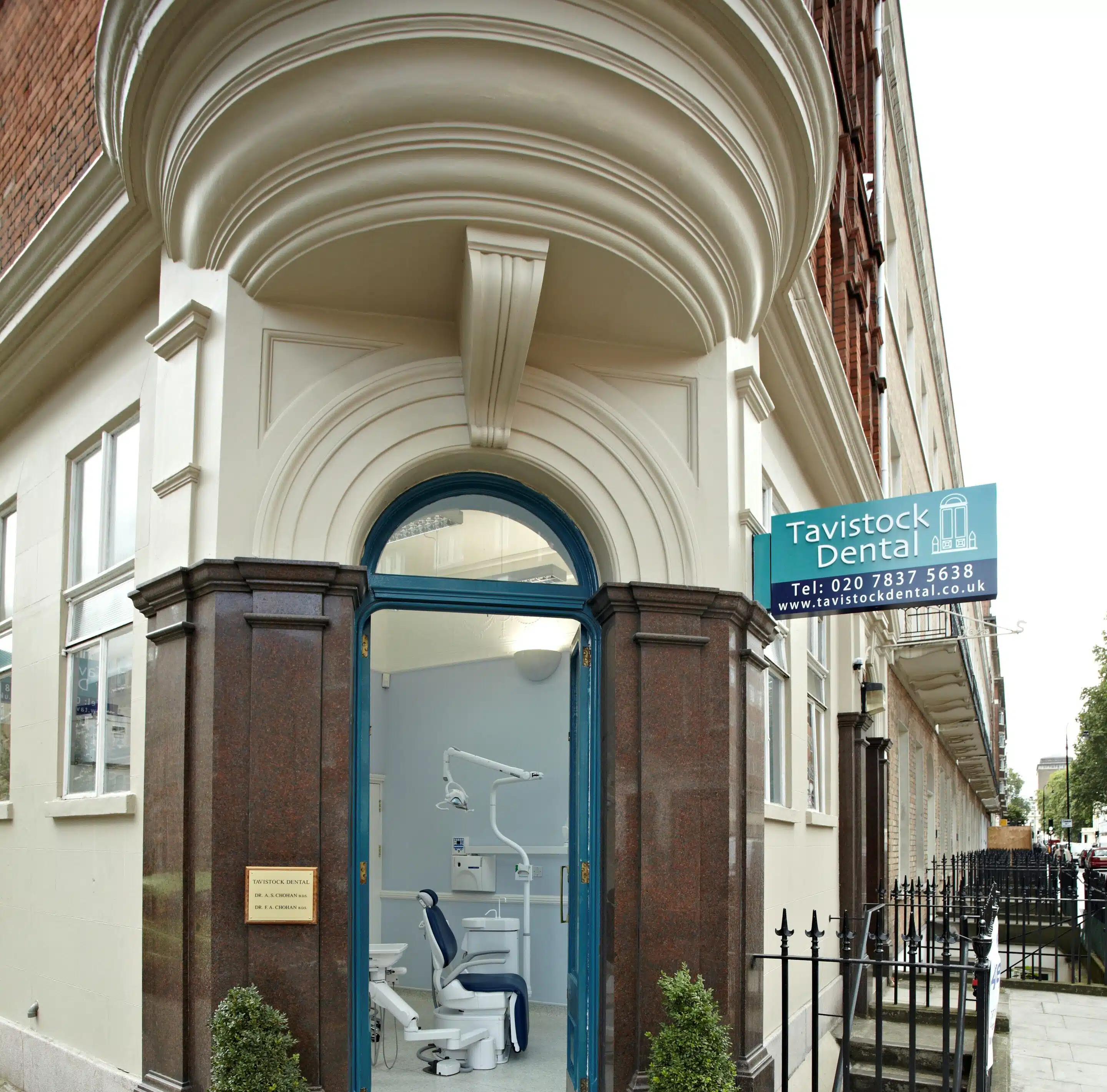
TOP TIP #3 – FIND THE BEST PLACE TO OPEN A DENTAL PRACTICE!
There are very few purpose-built dental facilities available on the UK market. This means practices must consider various types of existing buildings, with the location often being completely overlooked. Don’t fall into the trap of proceeding with a property because of circumstantial pressures! It’s worth waiting for a great location that can majorly impact your success in the long term. LOCATION IS (NEARLY) EVERYTHING!
Choose an area you know well with a suitable patient base for your target market. Consider the demographics of the local population and how well this suits your value proposition. For example, in a suburban town, evening appointments for city workers are likely to be popular. Once you have identified a possible location, look at the make-up of the local population. What is the age distribution? Is it mainly a commuter area? What is the general attitude towards dental care? Asking yourself these questions will help you formulate a service strategy that is of maximum relevance to your target audience, thus optimising your chances of success.
Footfall and pavement frontage are one of the most important considerations when choosing your location. A practice located in London’s Canary Wharf is one of the fastest-growing practices we’ve dealt with. They now have two separate practices in the same building within two years of opening! Consider a location near to coffee shops, as these usually benefit from increased footfall.
Does it suit your Business Plan to buy, or to rent? If buying, check if there is rental income from any sitting tenants as this could help cover practice running costs. If renting, check the termination and dilapidation clauses; make sure to understand what you will be responsible for at the conclusion of the rental period.
The below considerations are important, but maximum footfall should be your main priority. Consider such things as: a. Parking b. Disabled access c. Natural light d. Access to fresh air vents for ducted equipment e. Character and building appeal. The less clinical it appears, the more popular it is likely to be with patients.
TOP TIP #4 – PLANNING PERMISSION AND BUILDING CONTROL
New buildings or extensions to existing buildings require D1 planning permission. Altering the use of a building may also require you to obtain permission. There are various types of planning applications depending on the nature of your project.
A good architect, designer or project consultant will inform you which one(s) are needed.
- Contact an experienced dental project consultant or architect. Don’t attempt to complete concept layout plans yourself or with a generic architect. We have seen this approach fail many times. A generic residential architect will struggle to include all the dental-specific equipment and requirements in a drawing.
- Ask your dental architect or consultant if they honestly believe the application will succeed. They will gauge the likelihood of receiving approval and, if unlikely, may advise you to re-think your plans. Your project consultant or architect will create drawings and provide supporting documentation to help the planning department make their decision.
- Monitor similar, local planning activity on the local council website portal to identify opportunities or competition. New houses or extensions to similar buildings can sometimes help your own chances of approval and may signal the right time to begin your project. All planning application documents are public, so you should be able to view them online or by appointment.
- If obtaining planning permission proves difficult, try to get a ‘patients-lobby’ to help gain D1 use.
- Obtain a minimum ten-year leasehold contract if premises are to be rented.
- Ask your local planning office in advance if they are likely to grant D1 medical use.
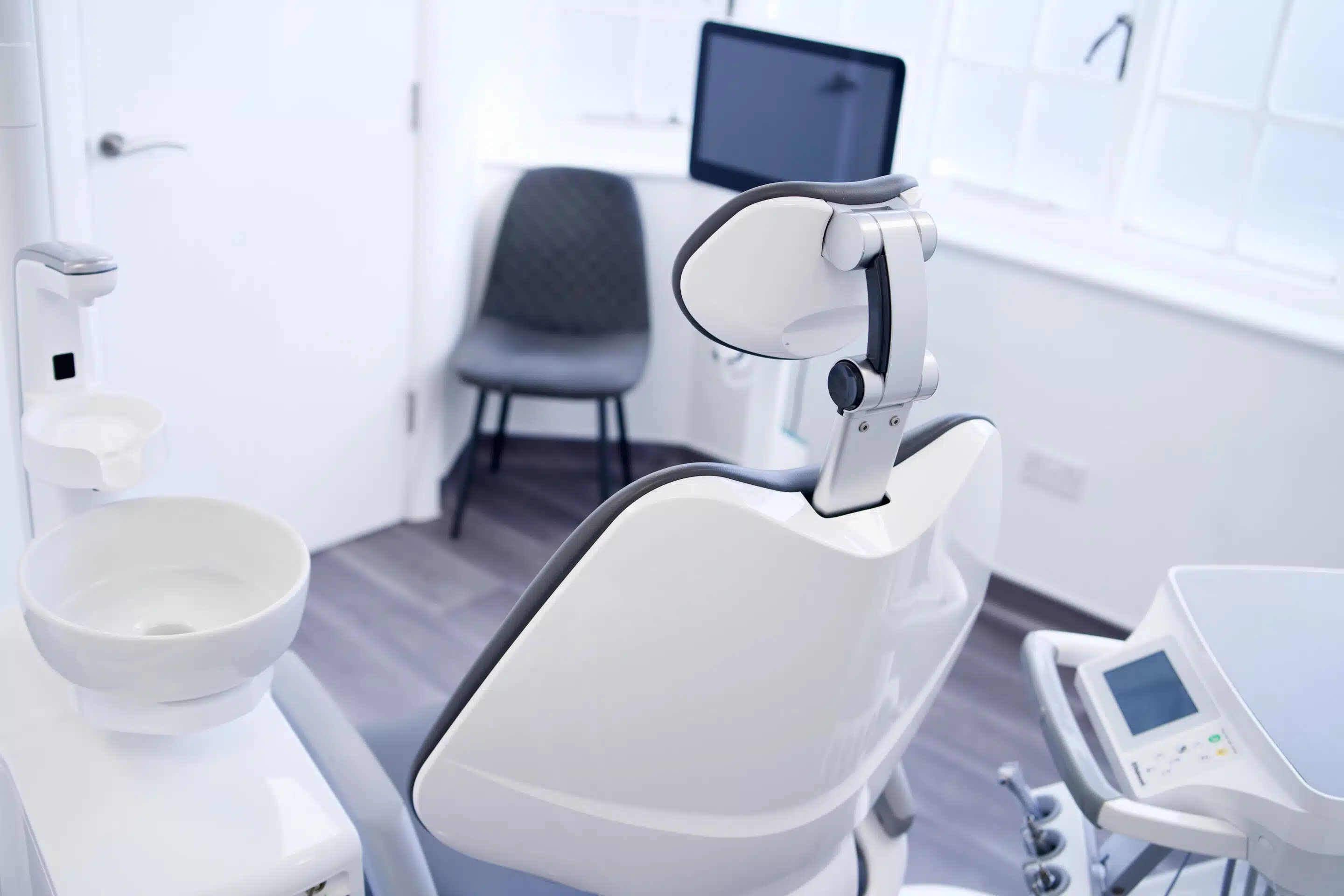
Building Control
As a service provider, you must obtain building control approval under the Regulatory Reform Order 2005.
In most cases, you will need to apply for building regulation consent. There is a significant difference between this and planning consent. When you make a planning application, the planning department considers the external appearance and the effect your proposal may have on adjoining properties and the local area. How your proposal will be constructed, the details of foundations, insulation and fire safety are not needed. These construction details are dealt with under national building regulations. However, the building regulations ensure, by inspection and approval, that the work is safe, minimises heat loss and makes provision for disabled access. The application cannot be flatly refused like a planning application.
You can apply to the council building control department or an independent approved inspector. Your dental architect or dental consultant can advise you of the best route for your project and will work with you until they are happy that the proposals comply with the full range of regulations.
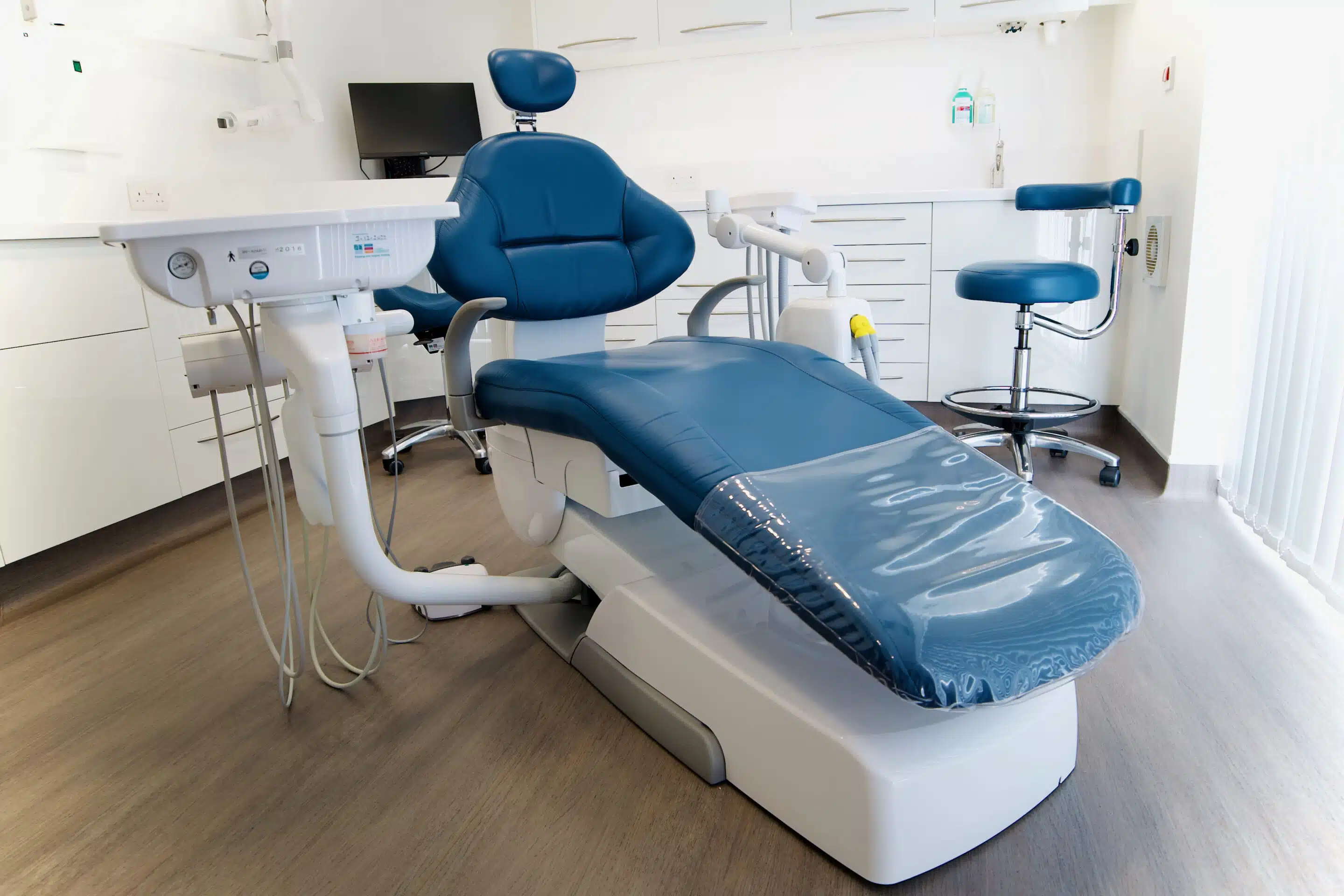
TOP TIP #5 – MARKETING PLAN
Marketing for a dental practice can be split into two sections. Both are essential.
- Your marketing positioning and base. This includes your unique proposition, website, brand name and logo, your reason for existence, your practice location and your goals. These are the things which will continually deliver benefits.
- Your marketing strategies and campaigns. These are necessary to provide a short-term boost to your sales. These include leaflet drops, open days, sponsoring events and even a referral scheme.
Market Positioning and Base
It is essential that as a practice owner and business manager, you set aside time to spend on marketing. If you get caught up in the day-to-day running of a practice, you will slow your chances of growth. Managing everything can be extremely challenging and this is one of the key reasons why so many start-up businesses fail. Employing a head nurse or appointing a practice manager right from the outset will free up your precious time to spend on important marketing activities.
Decide on your proposition and what you want to offer and ensure it stands out from your competitors.
A good quality website is essential and you should give consideration to search engine optimisation. Setting the website up before the practice opens should be a priority. This will provide credibility and give your patients, suppliers and staff confidence in your business.
Marketing Strategies and Campaigns
The actual opening of the practice itself is a major marketing opportunity and can be promoted via a leaflet drop to local homes and businesses. A press release (perhaps even approaching the local radio station) and an open day to meet potential patients in an informal setting may also prove beneficial.
Approach local businesses that operate in a similar health and wellbeing field such as gyms, spas, beauty salons and hairdressers. Involving them in your project may prove beneficial to both parties. For example, you could provide their customers with a unique offer that adds value to their business and engage in reciprocal advertising that delivers mutual benefits to all businesses involved.
A patient referral scheme is a great way to attract new patients. Once set up, you will receive good-quality referrals and enquiries for a small cost.
Offering a free initial check-up is a popular way to attract new patients. Patients see this as a low-risk way to test your services before deciding whether to spend their money. This also helps to build a relationship with your client base.
Pay attention to the Google reviews of the practice. Younger, tech-savvy patients will refer to these before attending so it’s essential that these are excellent. Train your reception team on how to treat disgruntled patients and ensure you always find a solution to their problems. Remember, it’s much better to lose some money on solving one patient’s problem than to lose ten new patients because of one bad review!
TOP TIP #6 – THE PRACTICE FIT-OUT PROCESS. WHO DO I NEED TO INVOLVE AND WHAT DO THEY DO?
Knowing where to start and who to work with is a daunting prospect. Condensing the services to a few trusted suppliers is beneficial. With fewer points of contact, the process will be much simpler to manage. Having one company responsible for the whole build and equipment fit-out will make the process more efficient. The team will be used to working with each other and there is often a cost saving.
Click on each job roles below to see how they’re involved and what they do.
Contact the Anglian Dental Practice Design Team Now:
Architect/Designer
Prime Responsibility
Complete the design work from existing to proposed. This will include:
- Planning permission/change of use. Liaison with local planning councils to get applications approved.
- Survey of premises and professional drawings.
- Practice layout, integrating surgeries, plant rooms, and decontamination. Compliant designs.
- Interior design work, mood boards, drawings, marketing, signage etc.
% of Overall Job (estimate)
3%
Notes
Partnering with a specialist dental architect will ensure your project runs smoothly. They can also provide contacts which will help you in other areas of your project.
Financier
Prime Responsibility
Put together a finance package which helps spread expenditure repayments across the coming years. This eases cash flow. Tax efficient borrowing should also be carefully considered.
% of overall job (estimate)
1% – 2%
Notes
Find a broker with experience and contacts and they will likely save you considerable amounts of money throughout the years ahead!
Builder
Prime Responsibility
Covers a wide range of responsibilities.
- Structural changes and partitioning.
- Extension building.
- Providing services (power, water, suction etc.) to relevant positions for chairs and cabinetry.
- All trades such as lighting, flooring, decorations, plumbing, electrics, signage, shop frontage, and seating.
As the building work is an extensive part of the project, the builder will be one of the most important contractors. They will provide a project manager to keep you updated and liaise about any changes.
% of overall job (estimate)
50%
Notes
Architects also offer a project management service. This tends to be expensive but will ensure the builder contractor keeps to the designs proposed.
Equipment Company
Prime Responsibility
Design, specification and installation of dental equipment and cabinetry. Includes the provision of service drawings and liaison with the builder to establish the needed services for the equipment and cabinetry.
% of overall job (estimate)
40%
RPA Advisor
Prime Responsibility
Provide advice to the builder and equipment company on the regulations surrounding x-ray shielding and positioning to achieve the safest results possible.
% of overall job (estimate)
1%
Notes
Contacts available on request.
Software Provider/IT Support
Prime Responsibility
Data, network points, server installation and a computer system to manage your patient records.
% of overall job (estimate)
4%
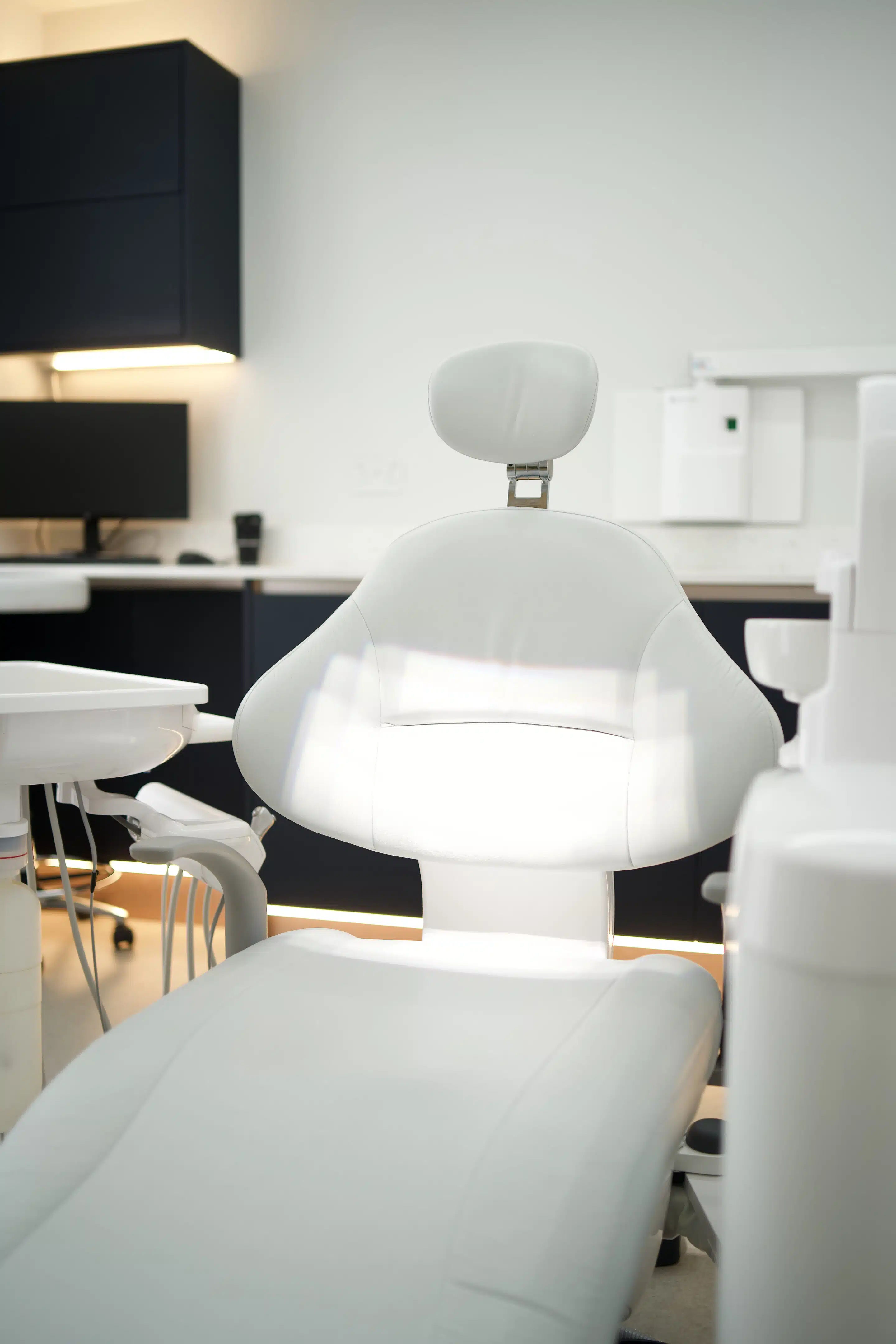
TOP TIP #7 – PRACTICE DESIGN CHECKLIST
Practice design is a process not an event. It should be carried out carefully with the involvement of an experienced dental-specific designer. Often, an equipment consultant is the person most suited to helping you with a practice layout design.
They have a deeper understanding of what equipment you will need. Types and makes of equipment often affect the room layouts, so it is best to agree on these during the same process.
We have developed a practice design checklist to prompt discussions with your consultant
- The number of dental surgeries.
- Decontamination room with clean and dirty zoning.
- Decontamination room airflow, from clean, to dirty, to extract.
- OPG/CBCT room.
- Lead lining requirements for X-rays.
- Plant housing for compressor and suction machines.
- Central or single unit suction system assessment.
- Provision for additional surgeries.
- Suction pipework design (particularly for central systems).
- Visually impressive reception desk.
- Chaperone seating in surgeries.
- Disabled patient toilet.
- Staff rooms, kitchen, breakout area, storage facilities, changing rooms.
- Classy reception seating and patient toilets.
- Surgery rooms at least 3.5m by 3m in size.
- Chair and cabinetry orientation to make maximum usage of natural light and many other factors (as outlined in Anglian Dental Whitepaper ‘Surgery Design’).
- Natural light penetration, particularly in basements.
- Fire regulations.
- Feature walls in reception that are visible from outside the practice.
- Patient flow and dispersion to dental rooms.
- Clinical staff movements (particularly nurses) and shielding these from waiting and reception areas.
- Clean water machine (RO water).
- Future-proofing for digital workflow capabilities.
| Item | Description | Cost |
|---|---|---|
| Reception desk | Approx. 3m wide with bespoke design, built-in lighting and surgery graphics | £7,000.00 |
| Reception seating | Single chair with high-durability leather upholstery | £350.00 |
| Dental chair | Knee break chair with a spittoon, operating light, delivery unit and suction manifold. Includes a spittoon valve and a scaler built-in | £16,250.00 |
| Cabinetry | Solid worktop with stainless steel sinks, approx. 5m straight run, two sinks and one bin | £5,750.00 |
| X-ray | Intra-oral including PHE test pack | £2,750.00 |
| Hygiene chair | Chair, spittoon, operating light, a delivery unit with built-in scaler | £13,000.00 |
| OPG | OPG 2D machine | £10,500.00 |
| CBCT | 3D CBCT machine | £38,000.00 |
| Suction pump | Single surgery suction pump with amalgam separation | £2,000.00 |
| Suction pump | Central suction pump for four rooms with amalgam separation | £5,000.00 |
| Compressor | Oil-free with dryer and soundproof housing suitable for four rooms | £4,000.00 |
| Decontamination | U-shaped cabinetry set with two sinks, wall cabinets and a compliant design | £8,000.00 |
| RO water unit | Mounted in a cupboard | £1,250.00 |
TOP TIP #8 – EQUIPMENT BUDGET CALCULATOR
This table sets out rough cost guidelines for a budget. This uses a mid-range specification.
An excel spreadsheet version of this budget list is available on request for more detailed budget planning.
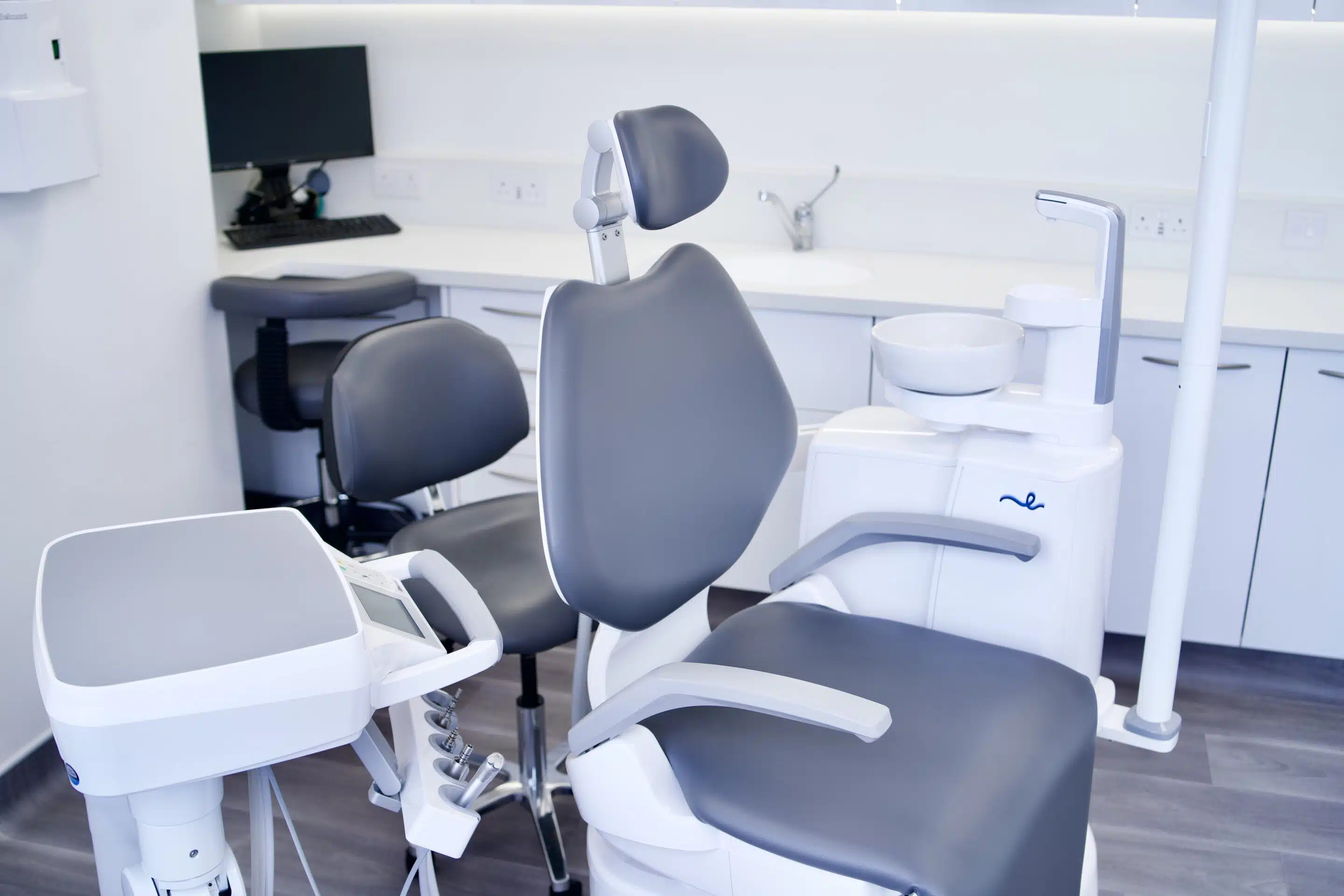

TOP TIP #9 – A PRACTICE MANAGER
Employing a practice manager is often overlooked until a new practice can afford to recruit one. Unfortunately, many squat practices limit their success because the principal dentist doesn’t delegate responsibilities appropriately. They become overly occupied with the day-to-day running of the practice, rather than focusing on improving the practice and growing its services and revenue.
The value of your time increases dramatically when you choose to invest it. Henry Ford became successful because he invested his time in developing an assembly line system to build cars. He would not have had the same success had he spent all his time building the cars himself.
Principal dentists usually spend too much of their time working inside a mouth or completing paperwork. The key to financial success is to invest your time in worthwhile projects that will grow your practice and increase revenue.
The rewards you gain from investing your time may not be immediately obvious, however, your practice will benefit more in the long-run. This small, yet significant thinking shift will allow you to achieve more, with less effort, and in less time. Guaranteed.
Employing a practice manager will allow you to delegate tasks and free up your time for other jobs. Your practice manager could be a nurse who shows initiative, commitment and good communication skills. Ensure you meet with this team member at least once a week to keep communication open and offer advice without getting too involved in the work yourself.
Delegated responsibilities should include:
- Supplies ordering and stock check
- Compliance management
- Equipment and product maintenance
- Staffing logistics
- Customer complaints (to a certain level)
- Reception management
TOP TIP #10 – MAINTENANCE OF THE PRACTICE. KEEP IT RUNNING SMOOTHLY!
Once your practice is set up, it’s important to be proactive and look ahead. As the leader of the business, you will be responsible for its growth and development.
Keep the dental equipment well maintained. Most equipment needs an annual service and this should not be ignored. Approach an equipment company when you first purchase or lease your equipment and this will hopefully avoid the need for engineer call-outs and costly repairs. Breakdowns are expensive, frustrating and can cause a bad reputation. Servicing contracts are a popular method to fix costs and keep maintenance simple.
Although it goes without saying, it’s essential you respect and value your staff. Holding regular team meetings, either weekly or monthly, will contribute to a positive team environment that will keep your staff engaged. Holding one on one meetings to discuss your staff’s development and employment is a proactive method used by many successful practices. This will identify any concerns early on and give you a chance to rectify them. One on one meetings are key in showing your team how much you care and demonstrating your readiness to listen to them.
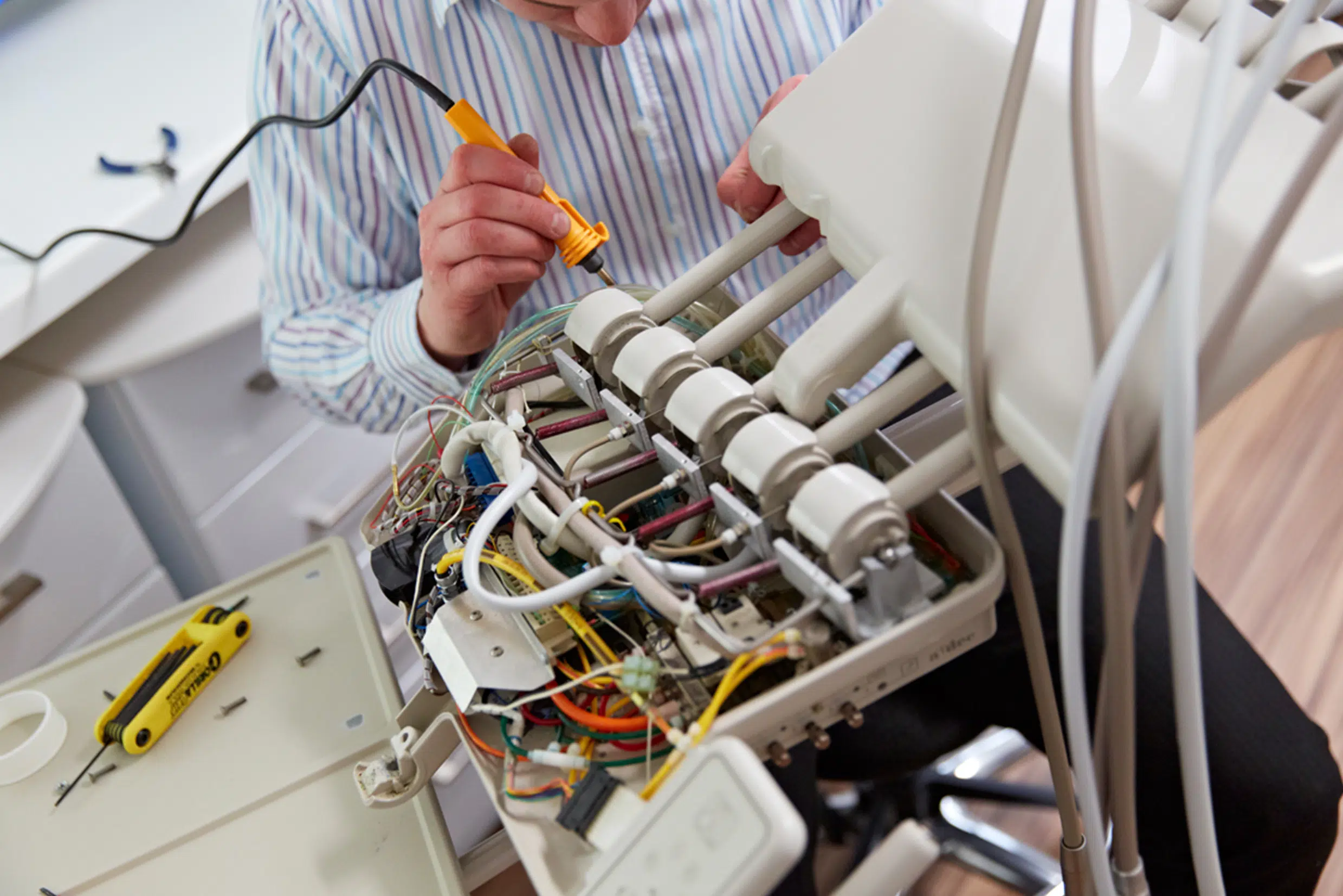
Compliance is an ever-growing concern for practices. Your practice manager or head nurse should be responsible for the compliance of the practice, its processes and the equipment. Do not try and do this yourself! Companies such as Isopharm (isopharm.co.uk) have a wealth of advice available for all areas of CQC compliance for no charge. There are also a number of companies who can support your practice on a CQC compliance capacity and will ensure all your processes and systems are developed in line with CQC regulations, one of which is Dental Compliance Made Easier.
Keep in contact with your dental colleagues and friends. Networking and joining social media groups and forums can provide access to their experiences and recommendations. Attend dental exhibitions, which happen at least twice per year. This is a great way to catch up with CPD points, meet up with contacts and observe new treatments, methods, suppliers and products. With the latest rise in digital workflow, it is abundantly clear how modern technology is changing the way dentistry works. It’s essential you keep up with the industry to be aware of upcoming opportunities and to avoid being left behind.


